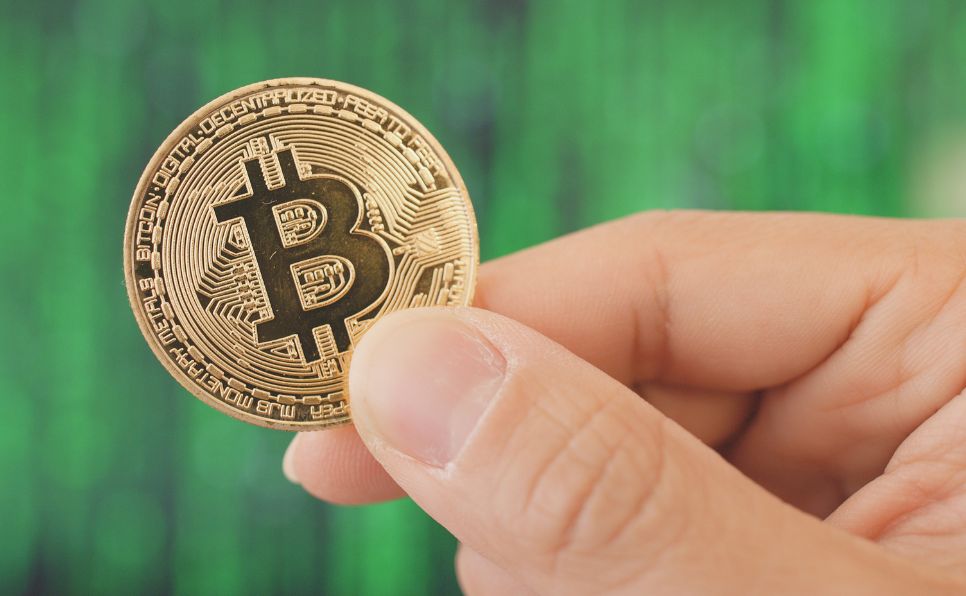The rise of cryptocurrencies has captured the attention of investors, tech enthusiasts, and the general public with its success and innovation. While the intrigue in decentralized financial systems has fueled the crypto boom, it has also attracted the attention of hackers, scammers, and cybercriminals who are eager to exploit vulnerabilities and capitalize on the growing adoption of digital assets. There is a lot of wealth in crypto, and protecting your crypto assets from theft, fraud, and scams is crucial.
Here are some of the various risks you should be aware of and precautions you can take to safeguard your digital wealth.
Phishing Attacks
Phishing attacks are one of the most common methods used by cybercriminals to steal sensitive information, such as wallet login credentials, private keys, and personal information from unsuspecting cryptocurrency users. These scams will typically involve fraudulent emails, messages, or websites designed to mimic legitimate crypto exchanges, wallets, and platforms. The fake sites masquerade as the legitimate ones to deceive users into disclosing their personal and financial information.
To protect yourself from phishing attacks, always verify the authenticity and legitimacy of websites and platforms, use secure and unique passwords, enable two-factor authentication (2FA), never share your sensitive information or credentials with anyone, and do not click on suspicious links and attachments in your inbox.
Malware Programs
Malware programs are malicious software programs designed to infiltrate and compromise computers, devices, and networks to steal sensitive information, monitor user activities, and gain unauthorized access to crypto wallets and accounts. Malware bugs can infect devices through phishing emails, malicious websites, software downloads, and removable storage devices to steal your keys, access your funds, and drain your accounts. These scams work by capturing keystrokes, passwords, and private keys.
To mitigate the risks of malware we recommend that you regularly update and secure your devices and operating systems. You should also use cold storage options to keep your digital information safe offline, avoid downloading and installing untrusted and suspicious software and apps, and be cautious when connecting to public Wi-Fi networks and sharing devices with others.
Fake Wallets and Exchanges
Fake wallets and exchanges are fraudulent platforms and applications designed to mimic legitimate crypto wallets and exchanges to deceive users into depositing and transferring their digital assets to cyber criminals. This type of phishing attack can be tough to spot and fake wallets and exchanges often lure users with attractive offers, promotions, and incentives. They can exploit vulnerabilities and loopholes in an exchange platform’s security protocols and procedures, then steal crypto assets or manipulate transactions and balances.
To safeguard your crypto assets from fake wallets and exchanges, conduct thorough research and due diligence, verify the credibility and reputation of the applications you use, and exercise caution and skepticism when encountering unsolicited offers and promotions.
Ponzi Schemes
Ponzi schemes are fraudulent operations that promise high returns and profits on investments in cryptocurrencies and blockchain projects to lure investors and participants. Ponzi schemes and investment scams often involve deceptive and misleading marketing tactics, false and exaggerated claims, and unsustainable and unethical practices to attract and manipulate investors.
To protect yourself from these investment scams, it is important to conduct your own comprehensive research and analysis. Take the time to scrutinize and verify the legitimacy and viability of crypto projects and opportunities, seek advice and guidance from reputable experts and professionals, and exercise diligence and skepticism when evaluating and considering investments and opportunities in the crypto market.
Social Engineering and Impersonation Attacks
Social engineering or impersonation attacks are another form of deceptive tactics used by cybercriminals to manipulate and exploit individuals and organizations. These scammers gain unauthorized access to sensitive information and steal your crypto coins by impersonating trusted and legitimate entities, such as friends, family, colleagues, and customer support representatives.
To safeguard yourself from social engineering and impersonation attacks, be cautious and skeptical of unsolicited communications and requests, and authenticate the identity and legitimacy of individuals and entities. We recommend that you use secure and private channels and methods to communicate and transact with others, and never disclose your sensitive information, credentials, or private keys to anyone. Do not comply with suspicious and unverified requests and demands.
Protecting your crypto assets from hackers and scams requires vigilance, awareness, caution, and proactive measures to identify and manage risks and vulnerabilities. Create some habits to safeguard your security, privacy, and financial well-being in the dynamic and evolving landscape of cryptocurrencies. By educating yourself, practicing good cybersecurity habits, and exercising caution in your transactions with others, you can protect yourself from hackers and scams to enjoy a safer, more secure, and rewarding experience with cryptocurrencies and blockchain technologies.
These habits are important for any personal information you share online. While crypto has had to work hard to prove itself as a secure method of financing, you should know that its blockchain technology and transaction processes are very secure. Exchange platforms, apps, and types of coins vary in their security.
If your keys are compromised by hackers, here are some steps to restore funds and access to your wallet.
Step-by-Step Guide for Backing Up and Restoring Your Crypto Assets
Losing your assets to hackers is serious, and if someone gets access to your private keys, you can lose all of your crypto. Keep your keys secure by backing them up.
Backing Up Your Crypto Assets
Backing up your crypto keys is crucial to ensure that you can recover and restore your digital assets in case of device failure, loss, theft, or other unforeseen circumstances.
Here’s a step-by-step guide to help you backup your keys securely:
Step 1: Choose a Secure Wallet
- Select a reputable and secure cryptocurrency wallet that supports backup and recovery features. Hardware wallets, software wallets, or mobile wallets vary in their security measures, so you may choose to store your keys in more than one wallet type to ensure access to your funds.
Step 2: Create a Strong Password
- Create a strong and unique password for your wallet that combines uppercase and lowercase letters, numbers, and special characters to enhance security and protect your crypto assets from unauthorized access and potential breaches.
Step 3: Enable Two-Factor Authentication (2FA)
- Enable two-factor authentication (2FA) on your wallet and accounts to add an extra layer of security by verifying your identity when accessing and managing your crypto assets.
Step 4: Write Down and Store Your Recovery Phrase
- Write down and securely store your recovery phrase (also known as seed phrase or mnemonic phrase) provided by your wallet during the initial setup process. The recovery phrase is a series of 12 to 24 random words that can be used to restore access to your wallet and recover your crypto assets in case of loss, theft, or device failure.
Step 5: Create Multiple Copies and Store Safely
- Create multiple copies of your recovery phrase and store them securely in different physical locations, such as a safe, vault, or secure storage facility, to protect against loss, theft, damage, and unauthorized access. Avoid storing your recovery phrase digitally, online, or in easily accessible locations to mitigate the risks of theft.
Step 6: Test Your Backup and Recovery Process
- Test your backup and recovery process by resetting or restoring your wallet using your recovery phrase to ensure that you can successfully regain access to your wallet and recover your crypto assets without any issues or complications.
Restoring your access to your crypto assets involves recovering your keys from your backup wallets to ensure that you can safely manage and use your crypto assets.
Here’s a step-by-step guide to help you restore your crypto assets securely:
Step 1: Install and Open Your Wallet
- Install and open your cryptocurrency wallet on your device or platform using the official and trusted application or software provided by your wallet provider, and ensure that you are accessing a legitimate and secure source to protect against scams, phishing, and malware.
Step 2: Select Restore or Recovery Option
- Select the restore or recovery option on your wallet and follow the on-screen instructions to initiate the recovery process using your recovery phrase (seed phrase or mnemonic phrase) to regain access to your wallet and recover your crypto assets. If you do lose your keys, a seed phrase will serve as a backup method for accessing your funds.
Step 3: Enter Your Recovery Phrase
- Enter and input your recovery phrase (seed phrase or mnemonic phrase) accurately and in the correct order into your wallet to verify and authenticate your identity, and initiate the restoration of your wallet and crypto assets.
Step 4: Set Up and Confirm New Password
- Set up and confirm a new password for your restored wallet, protect your crypto assets from unauthorized access, and comply with the wallet provider’s security procedures.
Step 5: Verify and Access Your Crypto Assets
- Verify and confirm the successful restoration of your wallet and access your recovered crypto assets, balances, transactions, and information to ensure that everything is intact, accurate, and up-to-date. Then, review and update your security settings, preferences, and configurations as needed.
Step 6: Backup Your Wallet Again
- Back up your restored wallet again by writing down and securely storing your recovery phrase and keeping multiple copies in safe and secure locations to protect against loss, theft, damage, and unforeseen circumstances. These measures help ensure the long-term security, accessibility, and availability of your crypto assets and investments.
Backing up and restoring your crypto assets is a process that requires careful planning, preparation, execution, and management to safeguard your digital wealth in the dynamic and evolving landscape of cryptocurrencies and blockchain technologies. Taking the time to learn about the evolving methods of cyber criminality is important and you can use this page as a starting point to educating yourself on the various risks at hand.
By following this step-by-step guide and implementing robust security protocols and procedures, you can protect and manage your crypto assets, mitigate potential risks and vulnerabilities, and enjoy a safer, more secure experience with cryptocurrencies and digital wallets.




